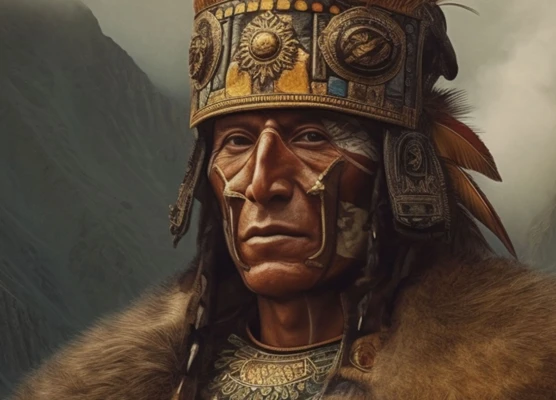The Inca civilization has long puzzled historians and archaeologists alike, with its origins shrouded in mystery. How did this extraordinary culture emerge in the heart of the Andes mountains, achieving a level of sophistication and power that rivaled some of the greatest empires in history? Delving into the pre-Inca cultures that laid the foundations, including the evidence of early Inca civilization, the legendary origin story that captivates the imagination, and the remarkable transformation of the Inca Empire, this article unveils the enigmatic beginnings of the Incas. Explore their advanced engineering and architecture, the fascinating ruling and social structure that held their vast empire together, the intricacies of their economy and agricultural mastery, the religious beliefs and practices that shaped their worldview, and ultimately, the tumultuous downfall of the Inca Empire at the hands of the Spanish Conquistadors. Delve into the rich legacy left behind by the Inca civilization, which continues to captivate and inspire to this day.
Contents
- The Pre-Inca Cultures
- The Rise of the Inca Empire
- Advanced Engineering and Architecture
- Ruling and Social Structure
- The Inca Economy
- Religious Beliefs and Practices
- The Downfall of the Inca Empire
- Conclusion
-
Frequently Asked Questions
- What were the major pre-Inca cultures?
- How did the pre-Inca cultures influence the Inca Empire?
- What were the achievements of the Chavín culture?
- What was unique about the Paracas culture?
- What is the significance of Moche pottery?
- Who were the rulers of the pre-Inca cultures?
- Did the pre-Inca cultures have a written language?
- What were the religious beliefs of the pre-Inca cultures?
- How did the Inca Empire integrate the pre-Inca cultures into their society?
- What happened to the pre-Inca cultures after the rise of the Inca Empire?
- References
-
Frequently Asked Questions
- 1. What is the significance of Machu Picchu in the Inca civilization?
- 2. How did the Inca civilization transform over time?
- 3. What evidence supports the existence of early Inca civilization?
- 4. Who was the mighty Sapa Inca?
- 5. What was the Ayllu system in the Inca civilization?
- 6. How did the Inca civilization sustain their economy?
- 7. What were the religious beliefs of the Inca civilization?
- 8. How did the Spanish conquest impact the Inca civilization?
- 9. What is the legacy of the Inca civilization today?
- 10. Are there any existing mysteries surrounding the origins of the Inca civilization?
- References
- Read More
The Pre-Inca Cultures

The Pre-Inca Cultures were a diverse collection of societies and civilizations that thrived in the Andean region of South America long before the rise of the Inca Empire. These cultures laid the groundwork for the development of the Inca civilization through their innovative agricultural techniques, intricate pottery designs, and advanced metalworking skills. One notable pre-Inca culture is the Chavín culture, which flourished between 900 and 200 BCE. The Chavín people were known for their impressive stone architecture, including the famous Chavín de Huántar temple complex, which served as a religious center and pilgrimage site. The Paracas culture, on the other hand, excelled in textile production, creating intricate and colorful textiles that showcased their artistic sophistication. The Moche civilization, known for its elaborate pottery depicting scenes of daily life and rituals, thrived on the northern coast of Peru from 100 to 700 CE. These pre-Inca cultures not only contributed to the artistic and technological development of the Inca Empire but also laid the foundation for the complex social and religious systems that would come to define the Inca civilization as a whole. The knowledge and practices of these early cultures would be assimilated and expanded upon by the Inca, ultimately shaping the unique and enigmatic civilization that would emerge in the Andes.
The Rise of the Inca Empire
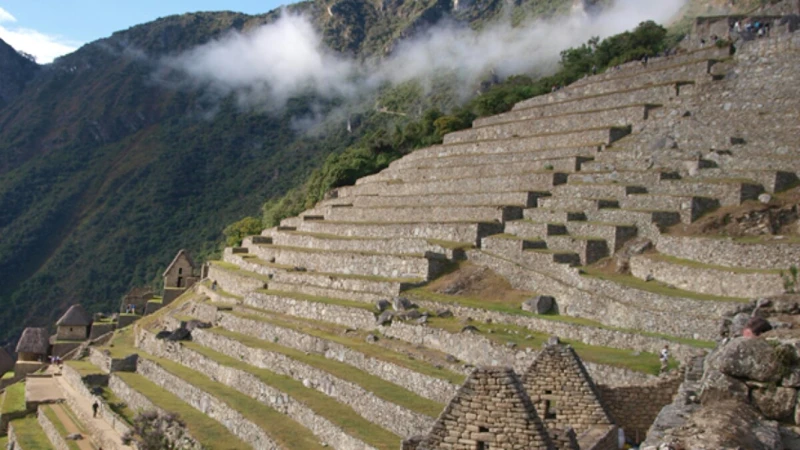
The Rise of the Inca Empire marked a significant turning point in the history of the Andean region. Emerging from humble beginnings, the Inca civilization gradually expanded its influence, eventually becoming one of the largest and most powerful empires in pre-Columbian America. The Inca Empire, also known as Tawantinsuyu, was founded in the early 13th century by Manco Capac, whom legend claims was the son of the Sun God, Inti. Under the leadership of skilled rulers and military strategists, such as Pachacuti and his son Tupac Inca Yupanqui, the Inca Empire experienced a period of rapid expansion and consolidation. Through calculated alliances, political maneuvering, and the strategic use of military force, the Inca Empire brought numerous neighboring peoples and territories under its control. The Incas established a highly centralized and organized administrative system, with Cusco serving as the capital and epicenter of their vast empire. The efficient network of roads, known as the Qhapaq Ñan, facilitated communication, trade, and administrative control across the expansive territories. This period of expansion and unity lasted until the arrival of the Spanish conquistadors in the 16th century, forever altering the course of Inca history.
Evidence of Early Inca Civilization
Evidence of Early Inca Civilization offers a glimpse into the fascinating origins of the Inca Empire. Archaeological discoveries have provided valuable insights into the early stages of Inca development. One of the notable pieces of evidence is the archaeological site of Saqsaywaman, located near the city of Cusco in modern-day Peru. Saqsaywaman showcases impressive stonework, including massive walls made of perfectly fitted stones weighing up to 200 tons. This incredible craftsmanship demonstrates the advanced engineering skills possessed by the early Incas. Another compelling piece of evidence is the agricultural terraces found throughout the Andean region. These terraces, such as those found in Moray, illustrate the Incas’ mastery of terrace farming techniques, which allowed them to cultivate crops at high altitudes. The intricate system of roads and pathways, known as the Qhapaq Ñan, reveals the Incas’ impressive organizational skills and their ability to connect distant regions within their empire. Additionally, the discovery of mummies and their burial sites provides insight into the Inca’s beliefs about the afterlife and their reverence for the deceased. These various archaeological discoveries collectively contribute to our understanding of the early Inca civilization and its remarkable achievements in engineering, agriculture, and cultural practices.
The Legendary Origin Story
The Legendary Origin Story of the Inca civilization is steeped in myth and folklore. According to Inca mythology, their ancestors, Manco Capac and Mama Ocllo, emerged from the depths of Lake Titicaca, bringing with them the gift of civilization. They were sent by the Sun God, Inti, to establish a great empire and bring order to the Andean region. As the divine siblings journeyed, Inti presented them with a golden staff, instructing them to build a city wherever it sank into the ground. Eventually, they arrived at the Cusco Valley, where the golden staff plunged deep into the earth, marking the sacred spot where the Inca capital, Cusco, would be founded. This divine origin story not only legitimized the Inca rulers’ power but also emphasized their close connection to the Sun God. The Inca people believed they were destined to rule over their vast empire as the chosen children of Inti. Although the exact historical accuracy of the origin story is subject to debate, its enduring symbolism and cultural significance remain central to the understanding of the Inca civilization and its perceived divine mandate.
The Inca Transformation
As the Inca civilization began to gain power and influence, a remarkable transformation took place within their society. The Inca people developed a highly centralized political system, uniting various tribes and communities under a single ruling authority. This transformation allowed the Inca Empire to expand rapidly, as they conquered neighboring regions and incorporated them into their ever-growing domain. At the heart of this transformation was the figure of the Sapa Inca, who served as both the political and religious leader of the empire. The Sapa Inca was believed to be the direct descendant of the sun god Inti, which enhanced their divine and authoritative status. The Ayllu system played a crucial role in the Inca transformation, as it served as a form of social organization that allowed for the distribution of resources, labor, and land among the population. This system ensured that each member of society had a role to play and contributed to the well-being of the empire. The Ayllus also fostered a sense of unity and collective responsibility among the Inca people. Through their exceptional organizational skills and astute political strategies, the Inca successfully integrated diverse cultures and communities into their empire, establishing a harmonious and efficient society that endured for centuries. The Inca transformation was not only a testament to their administrative prowess but also a reflection of their deep-rooted spiritual beliefs and reverence for their divine rulership. The legacy of this remarkable transformation can still be seen today in the ruins of their magnificent cities and the awe-inspiring stories passed down through generations.
Advanced Engineering and Architecture
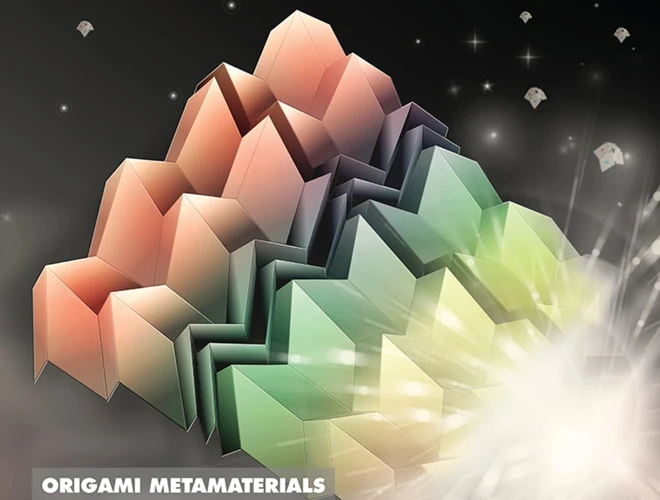
The Inca Empire was renowned for its advanced engineering and awe-inspiring architecture, showcasing the incredible ingenuity of this ancient civilization. At the pinnacle of their architectural achievements stood the majestic citadel of Machu Picchu, often referred to as the “Lost City of the Incas.” This remarkable site, nestled high in the Andes mountains, exhibits intricate stone masonry, perfectly fitting together large stones without mortar. The construction of terraces enabled the Incas to cultivate crops on steep slopes, a testament to their mastery of engineering and agricultural techniques. The precision and skill with which the Incas designed their buildings and roads is evident in the complex network of roads called the “Inca Road System,” incorporating suspension bridges and tunnels. Their structures showcased not only a practical purpose but also a divine significance, with the Temple of the Sun (Coricancha) in Cusco being a prime example of their religious and architectural prowess. The Inca Empire’s architectural marvels continue to captivate visitors to this day, serving as a testament to the incredible achievements of this sophisticated civilization.
Machu Picchu: The Crown Jewel
Machu Picchu, often referred to as the “Crown Jewel,” is undoubtedly one of the most iconic and awe-inspiring archaeological sites in the world. This ancient citadel, nestled high in the Andes mountains of Peru, was built by the Inca civilization around the 15th century. Its precise purpose and function remain a subject of debate and speculation among historians and archaeologists. Machu Picchu is known for its remarkable architectural features, including its precisely cut stones, terraces, and intricate drainage system. The city is divided into distinct areas, such as the agricultural sector, residential compounds, and religious precincts. The Intihuatana stone, a carved rock structure believed to have served as an astronomical calendar, stands as a testament to the advanced astronomical knowledge of the Inca. The breathtaking panoramic views of the surrounding mountains and valleys from Machu Picchu further add to its allure and mystique. Despite its remote location, Machu Picchu was likely an important center for religious and ceremonial activities, reflecting the Inca’s reverence for the natural world and their connection to the cosmos. Today, Machu Picchu continues to captivate visitors from around the globe, who marvel at its grandeur and immerse themselves in its rich history and profound cultural significance.
Other Remarkable Inca Sites
Other Remarkable Inca Sites showcase the architectural brilliance and cultural significance of the Inca civilization beyond the iconic Machu Picchu. One such site is Sacsayhuamán, located just outside of Cusco, Peru. This massive fortress complex impresses visitors with its meticulously crafted stone walls and strategic positioning atop a hill, offering panoramic views of the surrounding landscape. The intricate stonework of Sacsayhuamán, consisting of massive stones fitted together perfectly without the use of mortar, continues to astound archaeologists and historians. Another notable Inca site is Ollantaytambo, situated in the Sacred Valley of Peru. This site served as both a defensive fortress and a ceremonial center, showcasing the Inca’s engineering prowess. The terraced agricultural platforms, still used by local communities today, highlight the Inca’s advanced knowledge of farming techniques in a rugged mountainous environment. The fortress complex at Ollantaytambo features massive stone walls, intricate stone carvings, and an impressive system of water channels. Other remarkable Inca sites include Pisac, known for its agricultural terraces and intricate rock art, and Choquequirao, often referred to as the “Sister of Machu Picchu” due to its similar architectural style and remote location. These sites offer valuable insights into the ingenuity and cultural achievements of the Inca civilization, solidifying their place as one of the most fascinating and advanced cultures in history.

The Inca Empire was characterized by a complex ruling and social structure that played a crucial role in maintaining order and control over its vast territories. At the top of the hierarchy stood the mighty Sapa Inca, who was believed to be the chosen representative of the gods on earth. The Sapa Inca wielded absolute power and was revered as both a political and religious figure. Beneath the Sapa Inca were the nobles, who held important administrative and military positions within the empire. The Ayllu system, a fundamental part of Inca society, organized the population into small communities where individuals worked collectively on agricultural and infrastructure projects. The importance of the Ayllu system cannot be overstated, as it served as the backbone of the Inca economy and social cohesion. Through this hierarchical structure, the Inca Empire maintained control over its vast territories, ensuring the smooth functioning of its society and the continuation of its power. The ruling and social structure of the Inca Empire was a testament to their organizational genius and their ability to govern a vast and diverse empire.
The Mighty Sapa Inca
The Mighty Sapa Inca was the ruler and spiritual leader of the Inca Empire, wielding immense power and influence over his subjects. The title “Sapa Inca” translates to “the only Inca,” emphasizing the supreme authority held by the ruler. The Sapa Inca was believed to be a direct descendant of the Sun God Inti, lending him a divine status and making him the intermediary between the earthly realm and the gods. The Sapa Inca’s role extended beyond political and military leadership; he was also responsible for maintaining harmony with the gods through rituals and sacrifices. As the highest authority, the Sapa Inca resided in the magnificent city of Cusco, the capital of the empire. He lived a life of luxury and was surrounded by a vast court and an extensive bureaucracy that helped him govern the vast territories under his control. The Sapa Inca’s power was so absolute that he even had control over the territories and resources of his deceased predecessors, which were preserved and maintained as ancestral estates. The symbol of the Sapa Inca’s authority was the royal headdress, known as the mascapaicha, adorned with intricate feathers and precious gemstones. The role of the Sapa Inca was passed down through a dynastic succession, but not necessarily from father to son. In some cases, the successor was chosen based on merit and capabilities rather than bloodline. The monarchy of the Inca Empire operated under a strict pyramid-like hierarchy, with the Sapa Inca at the pinnacle, ruling over a vast network of administrative officials, regional governors, and local leaders known as curacas. The authority and charisma of the Sapa Inca were crucial in ensuring the stability and loyalty of the empire, as his subjects believed that his rule was vital for maintaining the prosperity and well-being of the entire Inca civilization. Through his divine lineage and unquestionable power, the Sapa Inca served as the embodiment of the Inca’s religious and political systems, centralizing authority and consolidating the empire under his rule.
The Importance of the Ayllu System
The Importance of the Ayllu System cannot be overstated when discussing the ruling and social structure of the Inca Empire. At the heart of Inca society, the Ayllu System was a fundamental component that ensured the well-being and cohesion of the communities. An Ayllu referred to a kinship group or extended family unit that worked collectively and shared resources. It was not just an economic structure but also a social, political, and religious system. The Ayllu provided social support, labor distribution, and agricultural cooperation among its members. The concept of reciprocity was deeply ingrained in the Ayllu System, where individuals were expected to contribute their skills and efforts to benefit the community as a whole. This system fostered a sense of unity and interdependence within Inca society. Each Ayllu had a leader known as the Curaca, who acted as a liaison between the community and the Inca state. This hierarchical structure ensured efficient administration and distribution of resources. The Ayllu System also played a crucial role in the maintenance of ancestral traditions, as oral history and cultural practices were passed down through generations within the Ayllu. It served as a means of social control and identity formation, binding individuals together through shared ancestry and responsibilities. Ultimately, the Ayllu System promoted social harmony, collective prosperity, and the preservation of Inca cultural heritage throughout the vast territories of the empire.
The Inca Economy
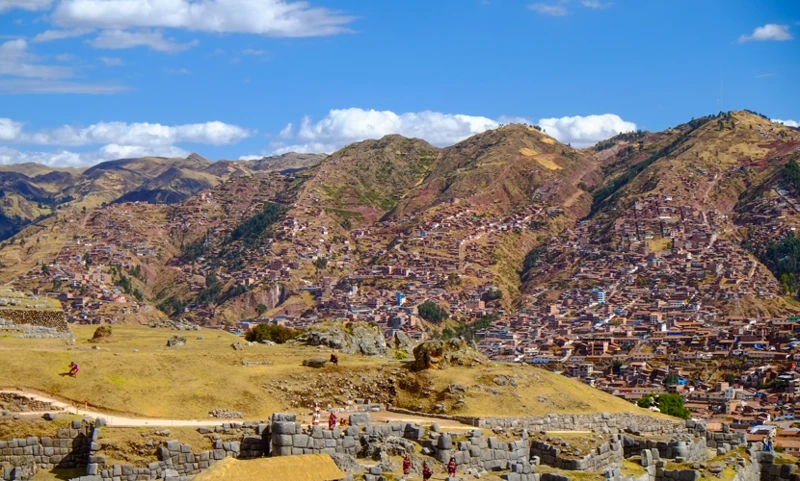
The Inca Economy was a complex and well-organized system that played a crucial role in the success and expansion of the Inca Empire. At its core was terrace farming, a remarkable agricultural practice that allowed the Inca to cultivate crops in the rugged Andean terrain. The Inca ingeniously constructed terraces on the slopes of mountains, effectively transforming inhospitable land into fertile agricultural zones. These terraces not only enabled the production of staple crops such as maize, potatoes, and quinoa but also facilitated the growth of cash crops like cocoa and cotton, which were exchanged in long-distance trade networks. The Inca Empire also had an intricate system of labor and taxation known as the mit’a, where each citizen was obliged to contribute a certain amount of their time to the state, either through agricultural work or other forms of service. This system ensured a steady supply of labor for monumental construction projects, maintenance of infrastructure, and the provision of goods and services to the empire. Additionally, the Inca economy utilized a unique method of record-keeping known as “quipu,” which consisted of knotted cords that encoded information about items, quantities, and other economic transactions. This allowed for efficient administration and management of resources within the empire. The Inca Empire’s economic prowess not only sustained their vast dominion but also enabled the development of a thriving and prosperous society, leaving a lasting legacy that continues to fascinate and intrigue to this day.
Terrace Farming and Agricultural Mastery
Terrace farming and agricultural mastery were central to the success and sustainability of the Inca civilization. In the challenging landscape of the Andes, where steep mountains and rugged terrain made traditional farming methods difficult, the Incas ingeniously developed an advanced system of terrace farming. By carving terraces into mountainsides and constructing stone retaining walls, they created flat surfaces for cultivation. These terraces not only prevented erosion but also allowed for efficient irrigation and water management. The Incas showcased their agricultural prowess by cultivating a wide variety of crops, including corn, potatoes, quinoa, and various fruits and vegetables. Their deep understanding of different microclimates within their empire enabled them to grow crops that thrived in specific regions. The Incas implemented a system of labor and resource allocation known as mit’a, which ensured that farming responsibilities were shared among communities and that everyone had access to the necessary resources for successful cultivation. The Incas also employed sophisticated agricultural techniques such as crop rotation and the use of natural fertilizers. This mastery of agriculture allowed the Inca civilization to sustain a large population and thrive in an inhospitable environment. Terrace farming and agricultural innovation were integral to the economic and social stability of the Inca Empire, ensuring the availability of food and resources for all.
The Intriguing Use of Quipu
The Intriguing Use of Quipu was a unique and sophisticated method of record-keeping utilized by the Inca civilization. Quipus were intricate arrangements of colored strings, made from various materials such as cotton or llama hair, that were tied together at different lengths and intervals. These intricate knots and patterns held valuable information and acted as a form of communication. The main purpose of quipus was to keep track of important data such as census records, calendar dates, and even historical events. Each knot on the quipu represented a numerical value, while the position of the knot and the colors of the strings held additional meanings and significance. The quipus were primarily used by specialized individuals known as quipucamayocs, who were responsible for both creating and deciphering the quipus. While there is still much debate and mystery surrounding the exact method of reading the quipus, it is clear that they served as a complex and effective system of information storage and retrieval for the Inca civilization. The use of quipus not only showcased the Inca’s advanced mathematical and organizational skills but also highlighted their innovative approach to recording and preserving knowledge. Although much of the information encoded in these ancient quipus has been lost to time, their existence serves as a fascinating testament to the intellectual capabilities of the Inca Empire. They provide a glimpse into a civilization that thrived on intricate systems of communication and record-keeping, leaving behind a legacy that continues to puzzle and intrigue historians and researchers to this day.
Religious Beliefs and Practices
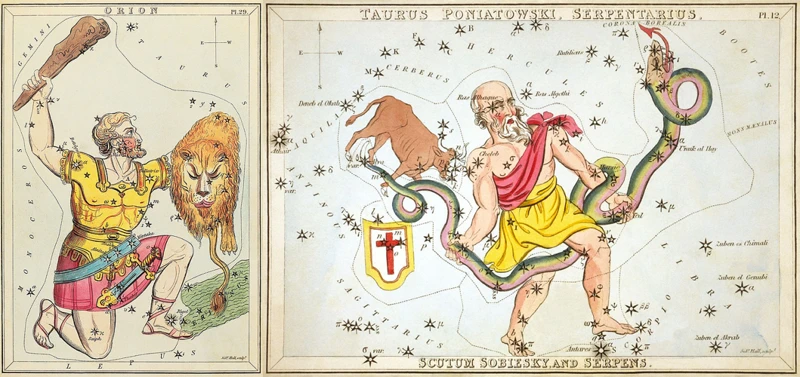
The religious beliefs and practices of the Inca civilization were deeply intertwined with their worldview and played a crucial role in their daily lives. At the center of their religious system was the worship of Inti, the Sun God. Considered the most important deity, Inti was believed to provide warmth, light, and life to the world. The Inca performed elaborate rituals and ceremonies to honor Inti, including offerings, sacrifices, and the celebration of Inti Raymi, a grand festival held during the winter solstice. The Inca also revered other natural elements such as the moon, mountains, and rivers, believing that these entities had divine powers. The Inca creation myth, known as the “Viracocha myth,” tells the story of the god Viracocha who brought order to the world, creating humans and shaping the landscape. Religion and mythology were inseparable from everyday life for the Inca, guiding their actions, decisions, and sense of identity. Through their religious practices, the Inca sought to maintain harmony with the natural world and maintain their connection to the divine. Their rich and intricate belief system continues to fascinate and inspire us today, providing glimpses into the complexity and depth of their spiritual world.
The Sun God Inti and Sacred Rituals
The Sun God Inti held immense importance in the religious beliefs and sacred rituals of the Inca civilization. As the supreme deity and the ancestral father of all Incas, Inti was revered as the provider of light, warmth, and life. The Inca people believed that the ruler of the Inca Empire was a direct descendant of Inti, reinforcing the divine authority and legitimacy of the Sapa Inca. Sacred rituals were performed regularly to honor and appease Inti, ensuring the fertility of the land and the prosperity of the empire. One of the most significant ceremonies was the Inti Raymi, or the Festival of the Sun, which took place on the winter solstice. During this elaborate event, the Sapa Inca would lead the procession from the Coricancha Temple, the highly revered temple dedicated to Inti in the capital city of Cusco. The ceremony involved offerings of agricultural products, animal sacrifices, dance performances, and religious chants, all aimed at expressing gratitude to Inti for his benevolence. The rituals also played a crucial role in maintaining the cosmic balance, reinforcing the connection between the earthly realm and the divine. The Inca’s reverence for Inti extended beyond rituals as well, with many architectural and artistic elements incorporating solar symbolism, such as the Sun Temple in Machu Picchu and the use of gold and silver to reflect the radiance of the sun. It is through the worship of Inti and the performance of sacred rituals that the Inca civilization sought to establish a harmonious relationship with the gods and ensure the prosperity and well-being of their society.
The Inca Creation Myth
The Inca creation myth holds a central place in the religious beliefs and cosmology of the Inca civilization. According to their mythology, the world was created by the god Viracocha, who emerged from the waters of Lake Titicaca. Viracocha then proceeded to shape the landscape, creating the Sun, Moon, stars, and all the living beings on Earth. He also established laws and moral codes for humans to follow. The myth further states that Viracocha initially sent his children, Inti (the Sun) and Mama Killa (the Moon), to the Earth to bring light and order. Inti and Mama Killa were revered as powerful deities and played crucial roles in Inca religious ceremonies and rituals.
In addition to the creation myth, the Inca believed that their rulers were descendants of Inti, the Sun god. The Sapa Inca, the emperor and political leader of the Inca Empire, was considered the “Child of the Sun” and held the highest position in Inca society. This divine lineage bestowed authority and legitimacy upon the ruling elite.
The Inca creation myth served as a foundation for the religious practices and rituals of the Inca civilization. It emphasized the importance of honoring and appeasing the gods through offerings, sacrifices, and rituals to maintain harmony and balance in the natural and spiritual realms. The myth also highlighted the close connection between the Inca people and the celestial forces, reinforcing their sense of identity, purpose, and spiritual connection to the universe.
The intricate symbolism and profound significance of the Inca creation myth illustrate the depth of the Inca’s religious beliefs and their understanding of the cosmos. It shaped their worldview, influenced their social and political structures, and played a vital role in the daily lives of the Inca people. Explore more about the significance of symbolism and mythology in different cultures by following this link: /symbolism-zodiac-signs-artworks/.
The Downfall of the Inca Empire
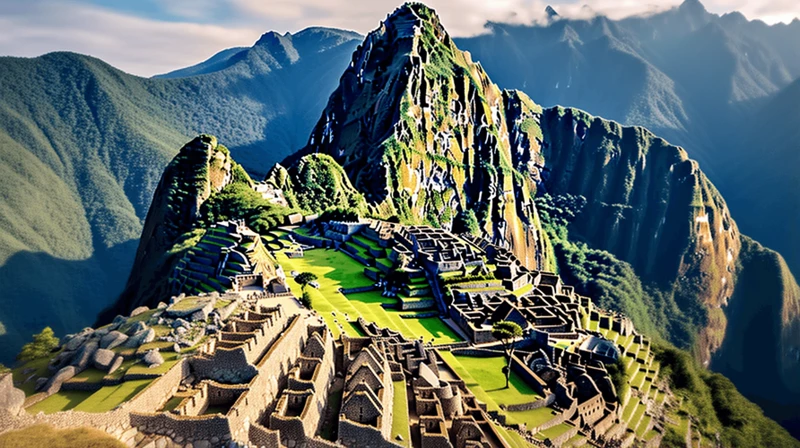
The downfall of the Inca Empire was a catastrophic event that marked the end of a once-mighty civilization. This tragic chapter in history can be primarily attributed to the arrival of Spanish conquistadors led by Francisco Pizarro in the early 16th century. In their quest for gold and glory, the Spanish ruthlessly exploited the vulnerabilities within the Inca Empire, including internal divisions and political instability. Despite the valiant efforts of the Inca ruler Atahualpa, who was taken captive by the Spanish but offered a massive ransom for his release, the conquistadors betrayed him and executed him. This act dealt a severe blow to the Inca Empire, leading to a power struggle among rival Inca factions. The introduction of European diseases also ravaged the Inca population, further weakening their resistance. Ultimately, the Spanish onslaught proved overwhelming, and the once-mighty Inca Empire fell to the invaders. The legacy of the Inca civilization lives on, but its downfall serves as a poignant reminder of the destructive forces of colonialism and the enduring impact it had on indigenous cultures.
The Spanish Conquest and Destruction
The Spanish Conquest and Destruction marked a pivotal and devastating chapter in the history of the Inca Empire. In the early 16th century, Spanish conquistadors, led by Francisco Pizarro, arrived in South America with the aim of seizing the vast wealth and lands of the Inca civilization. The Inca Empire, already weakened by internal conflicts and a devastating smallpox epidemic brought by European explorers, struggled to defend itself against the superior weaponry and tactics of the Spanish invaders. Despite valiant efforts by Inca leaders such as Atahualpa, the Inca Emperor, the Incas were ultimately defeated. In 1533, Atahualpa was captured by Pizarro and held for ransom. Tragically, even after the ransom was paid and the demands met, the Spanish executed Atahualpa. This event sent shockwaves throughout the Inca Empire and marked the beginning of the decline of the Inca civilization. The Spanish continued their conquest, dismantling Inca cities and temples, looting their treasures, and imposing their own beliefs and culture upon the conquered people. The destruction of sacred Inca sites such as Coricancha, the Temple of the Sun, symbolized the fall of the once-mighty empire. The Spanish conquest not only brought about the physical destruction of the Inca civilization but also resulted in the loss of their rich cultural heritage, including their intricate agricultural systems, engineering marvels, and religious practices. The remnants of the Inca Empire were absorbed into the Spanish colonial rule, forever altering the course of history for the indigenous peoples of the Andean region. To learn more about the impact of conquest and destruction on ancient civilizations, you can explore the intriguing concept of the afterlife in Roman mythology or delve into the diverse personalities associated with zodiac signs.
The Legacy of the Inca Civilization
The Legacy of the Inca Civilization continues to resonate throughout Peru and beyond. Despite the conquest and destruction of their empire by the Spanish conquistadors, the Inca left an indelible mark on the region’s culture, architecture, and traditions. One of the most enduring legacies of the Inca is their remarkable architectural achievements, exemplified by the awe-inspiring city of Machu Picchu. This ancient citadel, nestled high in the Andes mountains, showcases the incredible craftsmanship and engineering prowess of the Inca people. The precise stone masonry, carefully constructed terraces, and intricate irrigation systems at Machu Picchu demonstrate the advanced knowledge of the Inca in urban planning and infrastructure. They also left behind an extensive network of roads, known as the Qhapaq Ñan, which stretched across their vast empire, connecting diverse regions and facilitating trade and communication. The Inca’s agricultural techniques, such as terrace farming, continue to be practiced today, providing sustenance and livelihood to local communities. In terms of art, the Inca’s unique style of pottery and textiles still influence contemporary Peruvian artisans, who draw inspiration from their intricate patterns and designs. The spiritual beliefs of the Inca also endured, with many Andean communities maintaining a deep connection to the sacred Apus (mountains) and the natural world. The legacy of the Inca civilization extends far beyond physical monuments and artifacts. It lives on in the cultural practices, beliefs, and traditions that have been passed down through generations, preserving the rich heritage of this enigmatic civilization.
Conclusion
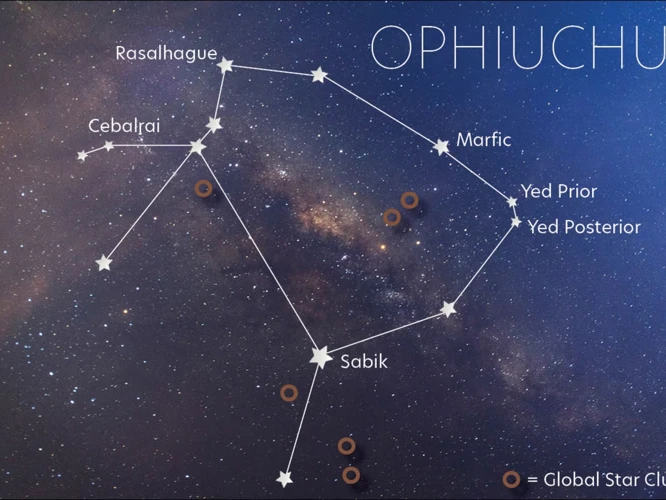
In conclusion, exploring the mysterious origins of the Inca civilization reveals a fascinating journey through time and culture. The Inca Empire emerged from a rich tapestry of pre-Inca cultures, each contributing their unique knowledge and skills to the development of this extraordinary civilization. Through advanced engineering and architectural marvels like Machu Picchu, the Incas showcased their ingenuity and mastery of stonework. Their ruling and social structure, led by the powerful Sapa Inca and supported by the Ayllu system, solidified their empire’s unity and strength. The Inca economy thrived through terrace farming and the intriguing use of quipu, a complex knot-based recording system. Their religious beliefs, centered around the worship of the Sun God Inti, were brought to life through sacred rituals and a captivating creation myth. However, the Inca Empire ultimately met its demise with the arrival of the Spanish conquistadors, leading to the destruction of their culture and legacy. Nevertheless, the influence and awe-inspiring remnants of the Inca civilization continue to captivate and inspire people worldwide. From their advanced engineering feats to their intricate social structures and religious practices, the Inca civilization’s enigmatic origins leave us in awe of the resilience and ingenuity of the Andean people that came before us. Through further exploration and preservation of their heritage, we can continue to uncover the secrets of the Inca and appreciate the enduring legacy they have left behind.
Frequently Asked Questions

What were the major pre-Inca cultures?
The major pre-Inca cultures include the Chavín, Paracas, and Moche civilizations. These cultures contributed to the development of the Inca Empire through their advancements in agriculture, art, and architecture.
How did the pre-Inca cultures influence the Inca Empire?
The pre-Inca cultures influenced the Inca Empire through their technological innovations, artistic styles, and social systems. The knowledge and practices of these earlier civilizations were integrated into the fabric of the Inca civilization, shaping its unique characteristics.
What were the achievements of the Chavín culture?
The Chavín culture excelled in stone architecture and constructed impressive temples like Chavín de Huántar, showcasing their religious and artistic prowess. Their sophisticated irrigation systems also contributed to their successful agricultural practices.
What was unique about the Paracas culture?
The Paracas culture was known for their exceptional textile production. Their textiles featured intricate designs and vibrant colors, reflecting their advanced weaving techniques and artistic excellence.
What is the significance of Moche pottery?
Moche pottery is renowned for its detailed depictions of everyday life, rituals, and mythological scenes. These ceramic vessels provide valuable insights into the culture, traditions, and beliefs of the Moche civilization.
Who were the rulers of the pre-Inca cultures?
The pre-Inca cultures had varied ruling systems, ranging from priests who held religious authority to warrior kings who governed their territories. Each culture had its own unique leadership structure.
Did the pre-Inca cultures have a written language?
The pre-Inca cultures did not have a fully developed written language like the later Inca Empire. However, they used systems like quipu, a series of knotted cords, as a form of communication and record-keeping.
What were the religious beliefs of the pre-Inca cultures?
The pre-Inca cultures had diverse religious beliefs, often centered around animism and the worship of natural elements. They believed in a complex pantheon of gods and spirits that influenced their daily lives and rituals.
How did the Inca Empire integrate the pre-Inca cultures into their society?
The Inca Empire integrated the pre-Inca cultures into their society by adopting and incorporating their art, architecture, agricultural techniques, and religious practices. This cultural assimilation played a crucial role in the formation of the Inca civilization.
What happened to the pre-Inca cultures after the rise of the Inca Empire?
With the rise of the Inca Empire, the pre-Inca cultures gradually assimilated into the larger Inca society. Their unique cultural practices and traditions became part of the diverse tapestry that defined the Inca civilization.
References
- History of the Incas
- Inca | History, Achievements, Culture, & Geography
- We Just Got a Huge Step Closer to Finding The Mysterious …
Frequently Asked Questions

1. What is the significance of Machu Picchu in the Inca civilization?
Machu Picchu is considered the crown jewel of the Inca civilization. It was a sacred site that served as a royal estate, a religious sanctuary, and an astronomical observatory. Its breathtaking architecture and strategic location have fascinated researchers and visitors alike.
2. How did the Inca civilization transform over time?
The Inca civilization started as a small tribe in the highlands of Peru but eventually grew into a vast empire that spanned thousands of miles. They assimilated other cultures, built impressive infrastructure, and established a complex social and political structure.
3. What evidence supports the existence of early Inca civilization?
Evidence of early Inca civilization includes archaeological sites, such as the ruins of Pachacamac and Sacsayhuaman, as well as ancient artifacts like pottery, sculptures, and textiles. These findings provide insight into the early Inca lifestyle and their advancements in various fields.
4. Who was the mighty Sapa Inca?
The Sapa Inca was the supreme ruler of the Inca Empire. Considered a divine figure, they possessed absolute power and were revered as the descendent of the Sun God. The Sapa Inca played a crucial role in the political, religious, and social aspects of the empire.
5. What was the Ayllu system in the Inca civilization?
The Ayllu system was a fundamental social structure in the Inca civilization. It was a communal and hierarchical organization where individuals belonged to a specific kinship group. This system facilitated the distribution of resources, labor, and ensured social cohesion.
6. How did the Inca civilization sustain their economy?
The Inca civilization highly relied on terrace farming, a remarkable agricultural technique where they built stepped fields on mountainsides. They also had a sophisticated system of road networks, which facilitated trade and communication. The use of quipu, a knot-based recording device, helped organize their economic transactions.
7. What were the religious beliefs of the Inca civilization?
The Inca civilization worshipped various gods, but the most important was Inti, the Sun God. They believed that Inti was the creator of the universe and the ruler of all aspects of life. They performed elaborate rituals and sacrifices to honor and appease the gods.
8. How did the Spanish conquest impact the Inca civilization?
The Spanish conquest led by Francisco Pizarro resulted in the downfall of the Inca Empire. The brutal conquest brought devastation, loss of life, and the destruction of many Inca cultural artifacts. It marked the end of the Inca civilization as an independent and thriving empire.
9. What is the legacy of the Inca civilization today?
The legacy of the Inca civilization can be seen in Peru’s rich cultural heritage, including their impressive architectural achievements, incredible craftsmanship, and agricultural techniques. The descendants of the Inca still practice their traditional customs and hold on to their vibrant cultural identity.
10. Are there any existing mysteries surrounding the origins of the Inca civilization?
Yes, there are several mysteries surrounding the origins of the Inca civilization. One of the most intriguing mysteries is how they were able to construct such elaborate architectural wonders without the use of mortar. Additionally, the exact origins of the Inca people and their language, Quechua, continue to be subjects of ongoing research and speculation.

